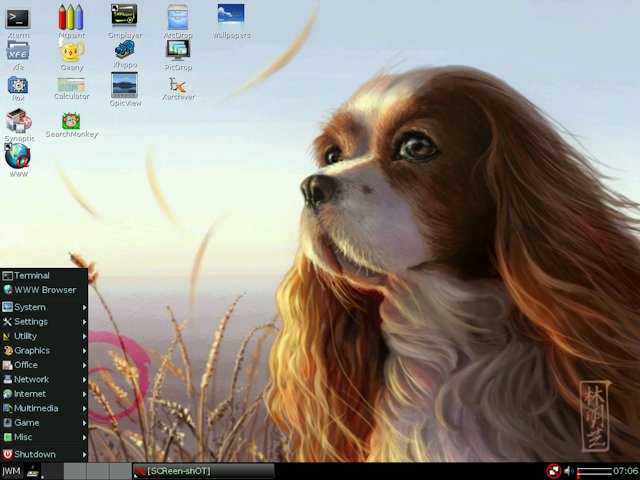Install Samba On Puppy Linux Live Cd

Enthusiastic review of Puppy Linux 5 Lucid Puppy AKA Lupu, a highly versatile, lightweight Linux distribution based on Ubuntu Lucid and oriented toward live CD use. Another document on samba: The Windows client PC needs to install the. If we stay as close to the Linux-SAMBA.
Installation Options Click for UEFI (Windows 8) installation instructions. Guided Installation Fatdog64 comes with an installer capable of installing to hard drive and flash drive. It provides guided step-by-step guide: • To choose which device to install to: • You can choose hard drive or flash drive.
• You can choose to format the chosen partition (= data loss) or leave it as is. • You can also run gparted to modify the partition. • For flash drive, you can install to a partition (e.g. Sdb1) or to the entire flash drive, in 'superfloppy' mode (e.g. We recommend you install to a partition. • To choose whether you want to install a boot loader: • Install boot loader to Master Boot Record (MBR) (unsafe, can cause existing operating system to stop booting, but Fatdog64 will boot) • Install boot loader to the partition where Fatdog64 is installed (usually safe if Fatdog64 is the only operating system in the partition. If you do this on partition that has an existing operating system in it, that operating system may stop booting) • Use existing Operating System Only works for Windows 2000/XP/Vista/7.

For Linux, please see below on manual installation note. • Do not install boot loader Note that Fatdog64 will not boot unless you install the boot loader. If you choose not to install a boot loader, you must do so manually yourself. Elsword Hack Tool. If you choose to install a boot loader (to MBR or partition), the partition that contains Fatdog64 will also be made the 'active' one and the one that will boot. If you have other operating systems installed in another partition - they may no longer boot. • To choose installation sources: • From Fatdog64 CD/DVD • From ISO file downloaded from the Fatdog64 distribution Fatdog64 installer supports installing to VFAT, FAT16, FAT32 (also known as MSDOS partition, usually used for flash drive), ext2/ext3/ext4 (Linux partitions, usually used on hard drive), and NTFS partition (Windows partition). Note: Fatdog64 Installer is experimental code.
It may cause data loss, or other installed operating systems to stop booting. Backup your data before you use it. Use at your own risk. Manual Installation Manual installation is good for upgrading an already installed system.
All you need to do is copy two files from Fatdog CD/DVD: vmlinuz and initrd to where you previously installed Fatdog64 before, and overwrite them. Note: Grub Legacy and Grub4dos are VERY slow loading files from ext4, you may not have noticed this with a typical 10MB kernel/initrd, but with Fatdog64 that will be closer to 370MB.
If you want to use one of these bootloaders, put Fatdog64's kernel/initrd on an ext3 partition. Manual boot loader configuration If you already has a boot loader and don't want to bork it, you may choose to install Fatdog64 manually. Simply copy the two files above somewhere in your disk, adjust your boot loader configuration (grub.cfg / menu.lst / extlinux.conf / whatever) to load Fatdog64's vmlinuz kernel and initrd. Some examples below. Example for menu.lst (GRUB and GRUB4DOS) title Fatdog64 rootnoverify (hd0,0) kernel /vmlinuz initrd /initrd Example syslinux.cfg (for syslinux, extlinux, pxelinux) label Fatdog64 kernel vmlinuz initrd initrd That (hd0,0) refers to GRUB-style naming of the device and partition.